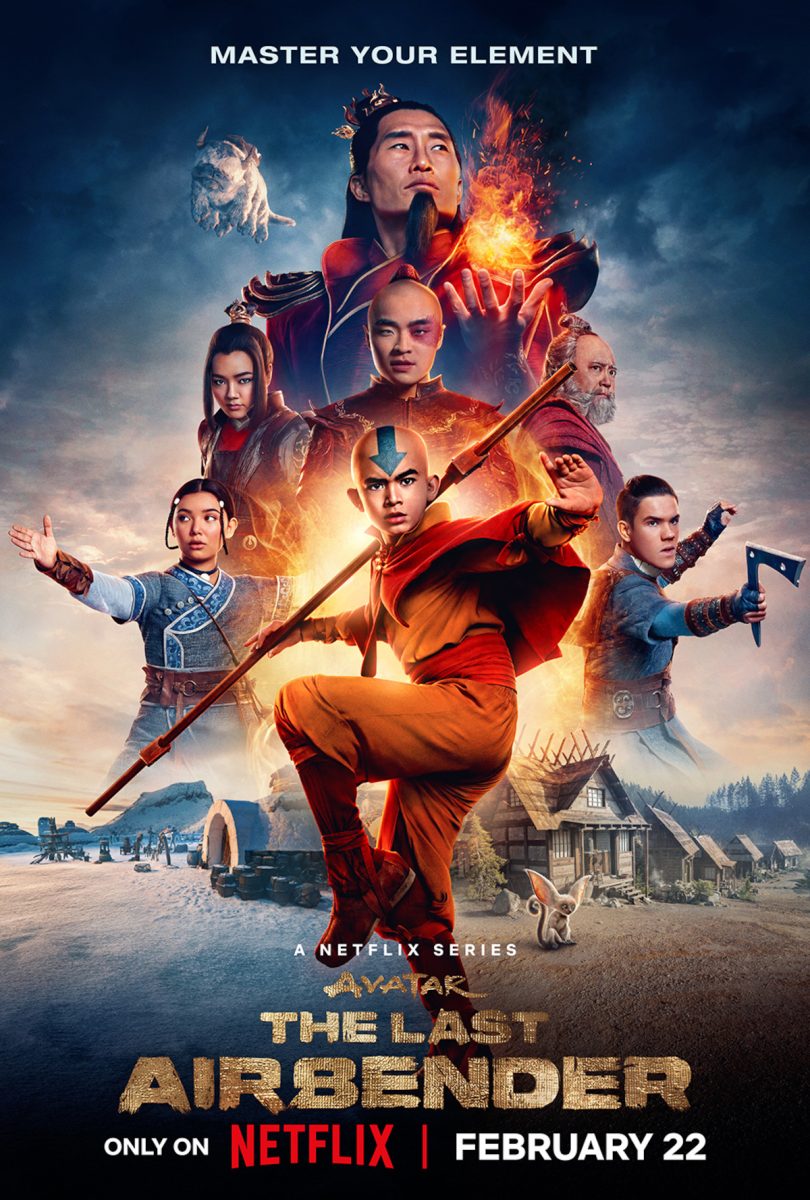“Avatar: The Last Airbender,” a beloved childhood TV show for many, which aired 2005-2008, released its controversial live-action Netflix adaptation Feb. 22.
In 2018 Netflix announced that it would be making a live-action adaptation of the series, commonly shortened to ATLA. While some fans were optimistic about this adaptation, many others were concerned.
The main reason numerous fans have been hesitant to celebrate an addition to the ATLA universe is the lackluster history of live-action adaptations. “The Last Airbender,” a live-action movie adaptation, came out back in 2010 and currently has an IMDb rating of 4.0 out of 10 stars, with 24.2% being one star.
The movie was so hated that even the creators of the original show who served as executive producers despised it. In a 2014 interview, Michael Dante DiMartine and Bryan Konietzko even said that “A) We didn’t want it to be done at all. Before anyone was attached, we didn’t want it. And then B) If it was going to be done, we wanted to do it, but they weren’t going to let us. C) When they attached Night, we just thought, ‘Well, this is what we’ve been dealt. We’ll just offer help when it’s asked of us, and if it’s not, we’ll stay out of the way.’ In the beginning, it was more positive and we offered help, but then we had a big falling out.”
“The Last Airbender” movie did win some awards, however. It was crowned Worst Picture at the 31st Golden Raspberry Awards and swept the Razzies with five awards: Worst Picture, Worst Director (Shyamalan), Worst Screenplay (Shyamalan), Worst Supporting Actor (Jackson Rathbone), and a special award, “Worst Eye-Gouging Mis-Use of 3D.”
With that universally agreed catastrophe haunting the Netflix ATLA live-action show, fans are worried that something similar will happen again.
This isn’t helped by the fact that showrunner Albert Kim made comments about changing the target audience in an IGN interview.
For Kim and and executive producer Jabbar Raisani “it was about striking that right balance, of making sure you were true to the DNA of the original,” he told IGN. “But at the same time, we had to make it a serialized Netflix drama, which meant it couldn’t just be for kids. It had to also appeal to the people who are big fans of ‘Game of Thrones.’ And so, it had to feel grounded and mature and adult in that way too. So that’s, like I said, the tightrope that we have to walk.”
Another point of contention for fans comes from the same interview. When asked about the change in episode length, Kim said “the second and third seasons become more serialized, but in the first season of the animated show, it’s very much adventure of the week. So a big part of the process in the writers’ room was kind of pulling apart all of those storylines and seeing how the narrative threads lay, and then weaving them together into much more of a serialized drama.”
For a decent number of fans, the slightly more relaxed and “adventure of the week” style helped the get attached to the characters. The character arcs present in the original show have long been held as some of the best writing in fiction, with videos, articles, and blogs still being written decades after its release.
Ultimately though, viewers will have to see for themselves if this new take on the “Avatar: The Last Airbender” story holds up to both the scrutiny and tentative hope if they find time to binge this series over the weekend.












